Travel in Germany: Six reasons why Mainz is worth visiting this autumn
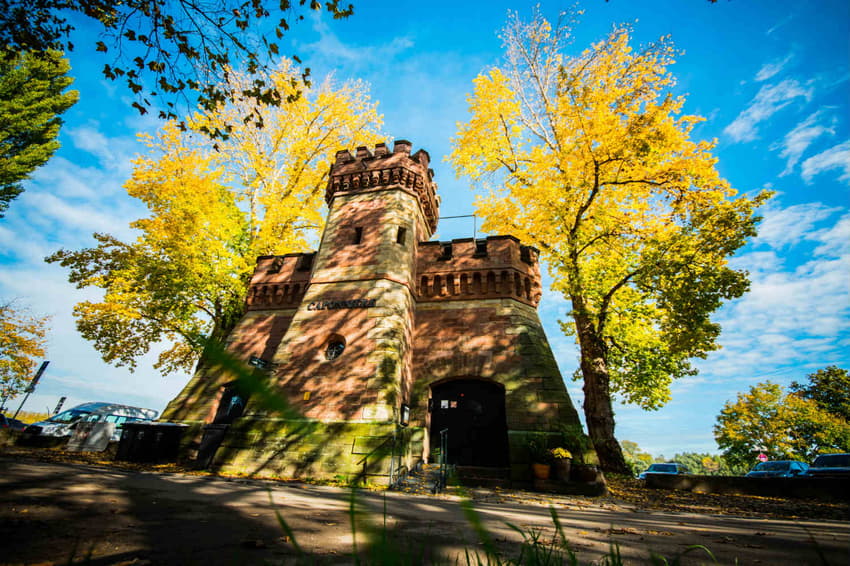
Sometimes overshadowed by other large German cities, Rhineland-Palatinate's capital offers visitors a fascinating taste of history, culture and wine.
In "normal" years, Mainz is perhaps best known around Germany for its Fassnacht carnival full of political satire, starting on November 11th and stretching on for six months.
This year’s events might be off the table, but there are many more attractions in the city worth exploring, as I discovered on a sunny September weekend.
Admittedly, I had been to Frankfurt several times, but had yet to visit this fascinating city only a half hour train ride to the south. Boasting a population of around 210,000, the middle-sized city of Mainz is packed with big attractions to be explored amid a relaxed atmosphere.
READ ALSO: Fastnacht first timer: Behind the scenes of Mainz’ famous carnival
Wine wonders
If you order wine in Mainz, it will almost always come from these regional rolling hills.
Mainz is also the capital of Germany’s largest wine producing region, with many nearby areas growing grapes on gently rolling hills along the Rhine river. The centre of Mainz is dotted with Weinstuben, or wine taverns, serving locally produced wine.
Following a common practice, we enjoyed a glass in the early evening with Spundekäs’, a homemade cream cheese sprinkled with pieces of onions and scooped up with a small pretzel (or 16...).
We also ventured out into the valleys of the Rheinhessen and Rheingau to sample newly harvested wines with BottleStops, a wine and tasting tour company which picks most visitors up in Mainz.
Roman ruins
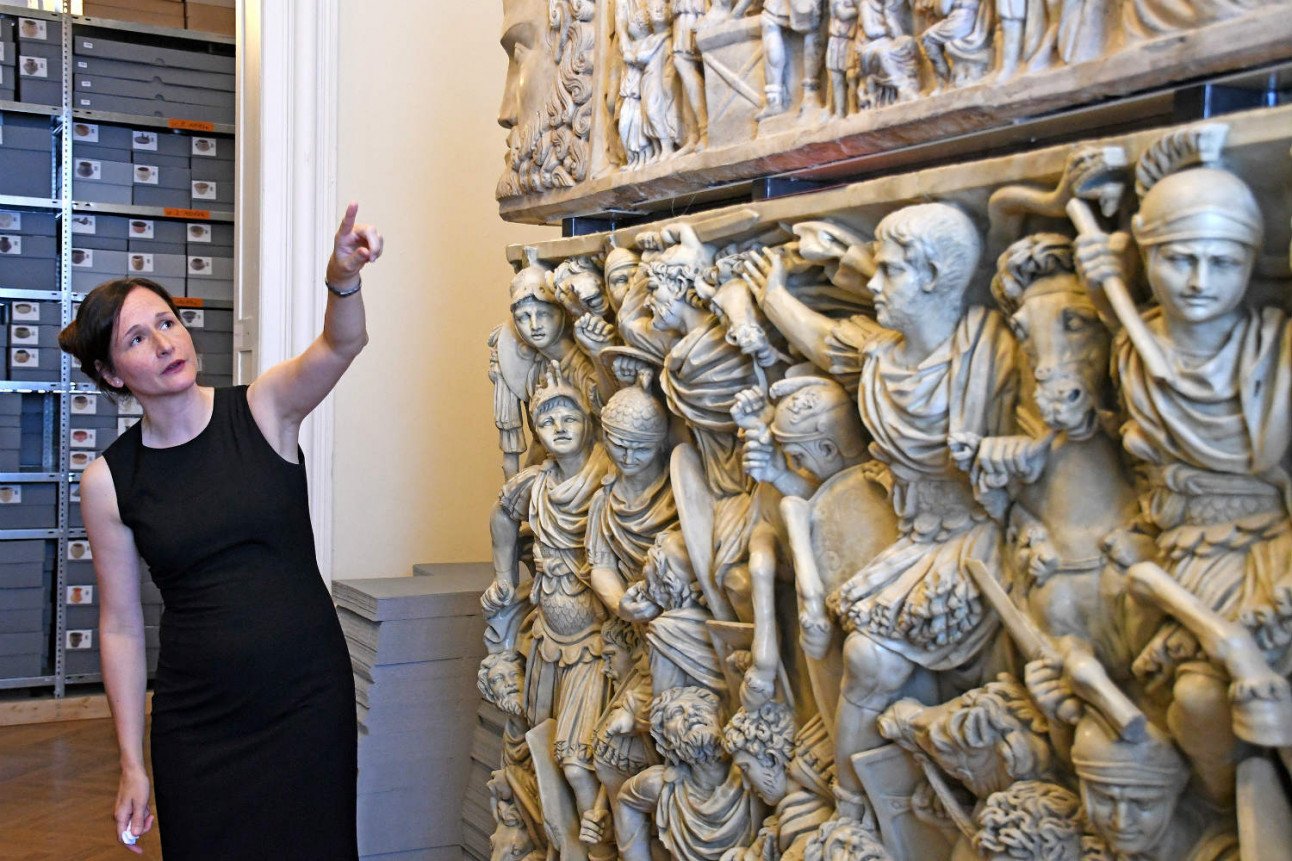
The director of the Roman-Germanic Central Museum (RGZM), Alexandra Busch, points to a Roman sarcophagus. Photo: DPA
Flash back 1,600 years, when Mainz was the mighty Mogontiacum, one of the strategic sites of the Roman Empire. The city served as a powerful military base for campaigns into the central and northern parts of Germany.
Today many ruins remind us of this long lost society. Particularly impressive is a preserved stone theatre which at one point seated over 10,000 spectators. In rainy weather, the city also boasts a number of museums devoted to its Roman past, and with impressive collections of artifacts.
Pedestrian paradise
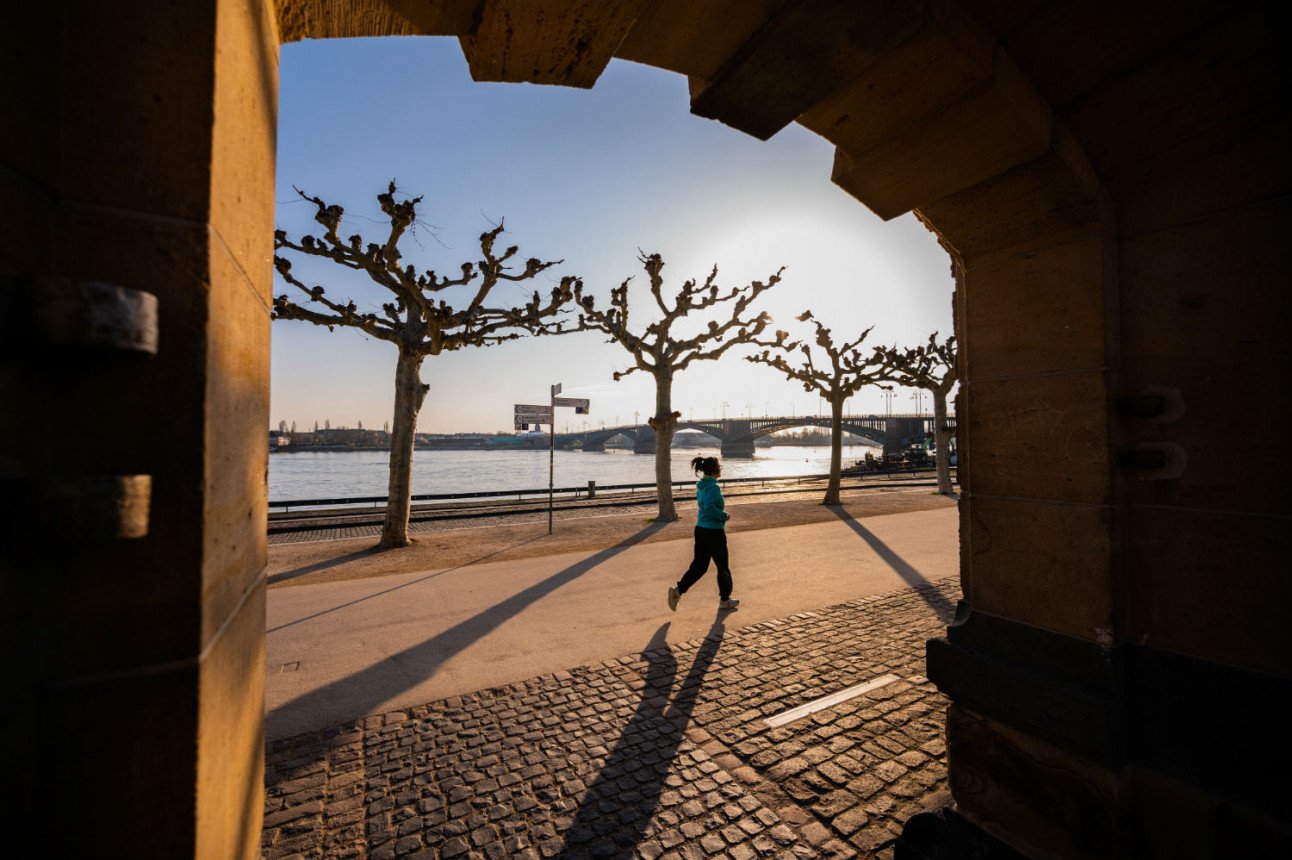
A jogger runs along the Rheinufer early in the morning. Photo: DPA
Especially in the autumn, Mainz is the perfect spot for a Spaziergang (walk) or run along the Rheinufer, which divides it from Wiesbaden, the capital of Hesse.
And if you’re trying to find your way back into the city centre, it’s next to impossible to get lost. Any street sign that runs parallel to the Rhine is marked in blue, and any that run away from it are coloured red. The system, in place since the mid-19th century, was partially put in place to help a growing number of foreigners in the city find their way around.
The Blue Wonder
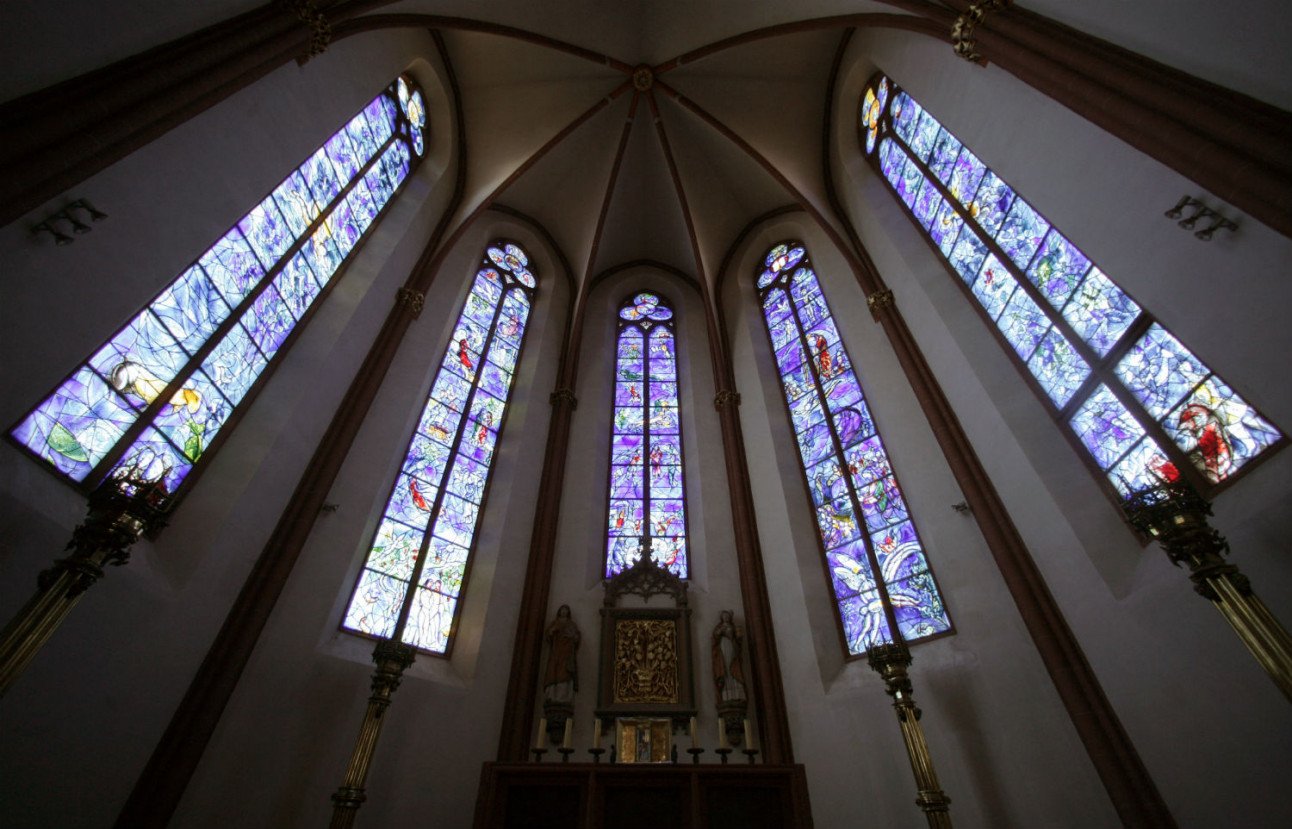
The famous windows of St. Stephan's Cathedral. Photo: DPA
Dubbed “Der Blaue Wunder”, the windows of Mainz’ St. Stephan’s Cathedral bears a rare work from one of the greats of impressionism, Marc Chagall.
The Jewish artist, who had fled to the US from France during the Nazi occupation, came to Mainz in 1978 to paint the windows as a sign of the Jewish-Christian connection.
An honorary citizen of the city, Chagall finished the last window shortly before his death at the age of 97.
Fit to Print
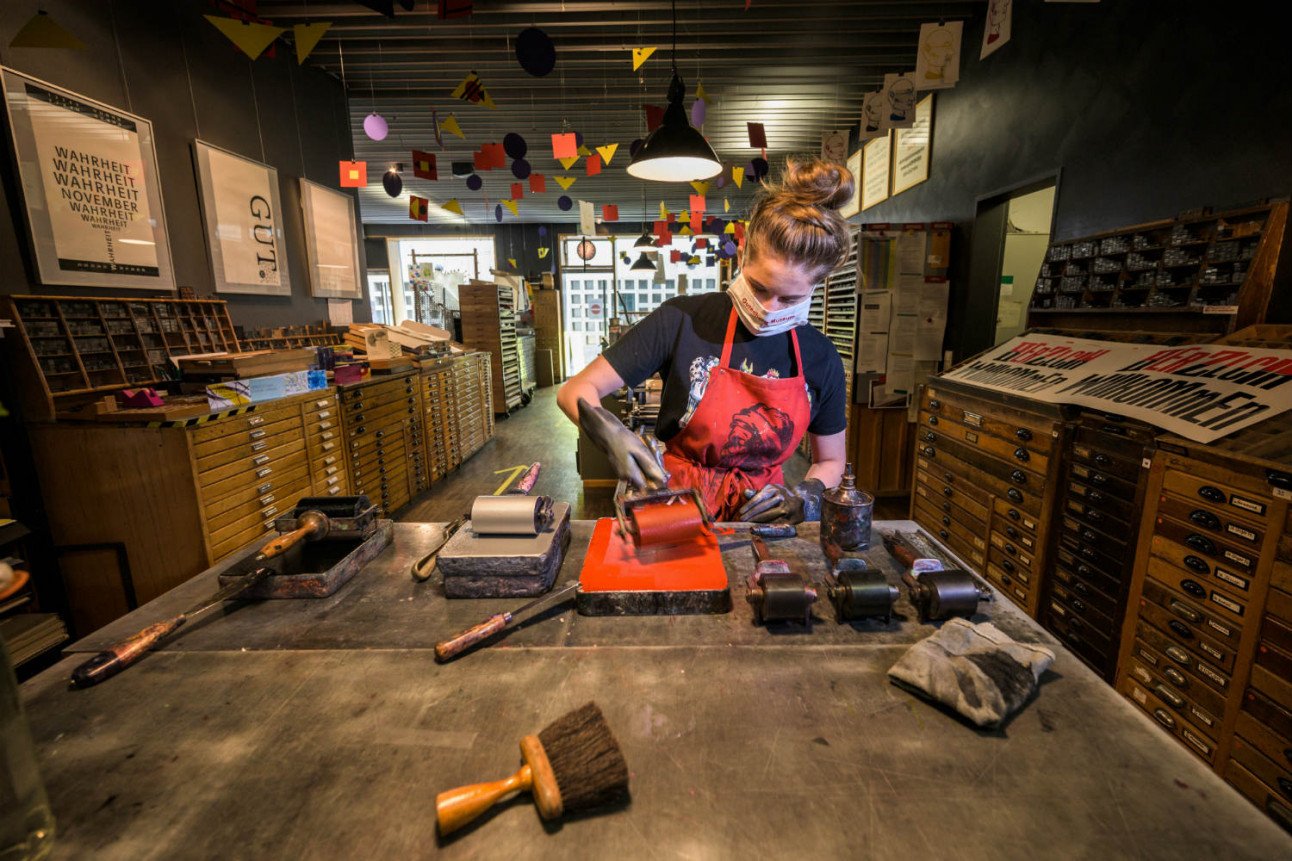
An employee at the Gutenberg Museum, after it reopened to visitors in May. Photo: DPA
As a journalist, I gravitated towards the Gutenberg Museum, named after the inventor of the printing press over 500 years ago. Its sprawling collection doesn’t just include many rare relics - such one of two remaining editions of the Gutenberg Bible - but also an extensive exhibition on printing’s beginning in many parts of the world, from Asia to Africa.
READ ALSO: 10 essential inventions you didn't know were German
After watching a daily demonstration of printing carried out by a real life replica, I could appreciate the ease of publishing in modern times.
Innovative architecture
From the half-timbered houses of the Altstadt, to a metallic cube shaped synagogue - which just celebrated its 10th birthday - the buildings of Mainz reveal a long history with a very diverse population.
Whether as a monument or repurposed restaurant, Mainz preserves its buildings to see and enjoy. We ended the trip with dinner and regional Riesling at the Heiliggeist (Holy Spirit), a former public hospital and church converted into a brewery in the 19th century.
Burned during World War II bombings, it was rebuilt - like most of Mainz’ city centre - to carry the city’s culture forward.
Comments
See Also
In "normal" years, Mainz is perhaps best known around Germany for its Fassnacht carnival full of political satire, starting on November 11th and stretching on for six months.
This year’s events might be off the table, but there are many more attractions in the city worth exploring, as I discovered on a sunny September weekend.
Admittedly, I had been to Frankfurt several times, but had yet to visit this fascinating city only a half hour train ride to the south. Boasting a population of around 210,000, the middle-sized city of Mainz is packed with big attractions to be explored amid a relaxed atmosphere.
READ ALSO: Fastnacht first timer: Behind the scenes of Mainz’ famous carnival
Wine wonders
If you order wine in Mainz, it will almost always come from these regional rolling hills.
Mainz is also the capital of Germany’s largest wine producing region, with many nearby areas growing grapes on gently rolling hills along the Rhine river. The centre of Mainz is dotted with Weinstuben, or wine taverns, serving locally produced wine.
Following a common practice, we enjoyed a glass in the early evening with Spundekäs’, a homemade cream cheese sprinkled with pieces of onions and scooped up with a small pretzel (or 16...).
We also ventured out into the valleys of the Rheinhessen and Rheingau to sample newly harvested wines with BottleStops, a wine and tasting tour company which picks most visitors up in Mainz.
Roman ruins

The director of the Roman-Germanic Central Museum (RGZM), Alexandra Busch, points to a Roman sarcophagus. Photo: DPA
Flash back 1,600 years, when Mainz was the mighty Mogontiacum, one of the strategic sites of the Roman Empire. The city served as a powerful military base for campaigns into the central and northern parts of Germany.
Today many ruins remind us of this long lost society. Particularly impressive is a preserved stone theatre which at one point seated over 10,000 spectators. In rainy weather, the city also boasts a number of museums devoted to its Roman past, and with impressive collections of artifacts.
Pedestrian paradise

A jogger runs along the Rheinufer early in the morning. Photo: DPA
Especially in the autumn, Mainz is the perfect spot for a Spaziergang (walk) or run along the Rheinufer, which divides it from Wiesbaden, the capital of Hesse.
And if you’re trying to find your way back into the city centre, it’s next to impossible to get lost. Any street sign that runs parallel to the Rhine is marked in blue, and any that run away from it are coloured red. The system, in place since the mid-19th century, was partially put in place to help a growing number of foreigners in the city find their way around.
The Blue Wonder

The famous windows of St. Stephan's Cathedral. Photo: DPA
Dubbed “Der Blaue Wunder”, the windows of Mainz’ St. Stephan’s Cathedral bears a rare work from one of the greats of impressionism, Marc Chagall.
The Jewish artist, who had fled to the US from France during the Nazi occupation, came to Mainz in 1978 to paint the windows as a sign of the Jewish-Christian connection.
An honorary citizen of the city, Chagall finished the last window shortly before his death at the age of 97.
Fit to Print

An employee at the Gutenberg Museum, after it reopened to visitors in May. Photo: DPA
As a journalist, I gravitated towards the Gutenberg Museum, named after the inventor of the printing press over 500 years ago. Its sprawling collection doesn’t just include many rare relics - such one of two remaining editions of the Gutenberg Bible - but also an extensive exhibition on printing’s beginning in many parts of the world, from Asia to Africa.
READ ALSO: 10 essential inventions you didn't know were German
After watching a daily demonstration of printing carried out by a real life replica, I could appreciate the ease of publishing in modern times.
Innovative architecture
From the half-timbered houses of the Altstadt, to a metallic cube shaped synagogue - which just celebrated its 10th birthday - the buildings of Mainz reveal a long history with a very diverse population.
Whether as a monument or repurposed restaurant, Mainz preserves its buildings to see and enjoy. We ended the trip with dinner and regional Riesling at the Heiliggeist (Holy Spirit), a former public hospital and church converted into a brewery in the 19th century.
Burned during World War II bombings, it was rebuilt - like most of Mainz’ city centre - to carry the city’s culture forward.
Join the conversation in our comments section below. Share your own views and experience and if you have a question or suggestion for our journalists then email us at [email protected].
Please keep comments civil, constructive and on topic – and make sure to read our terms of use before getting involved.
Please log in here to leave a comment.